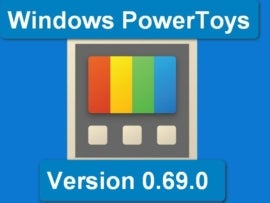-
Empxtrack: Best for comprehensive features
-
PHP Payroll: Best for automating tasks
-
AMGtime: Best for integrating with other services
-
Odoo: Best for controlling costs
-
PayMaster: Best for customized options
-
TimeTrex Open Source Community Edition: Best for a well-established product
-
ERPNext: Best for users with international teams
-
Razorpay: Best for companies based in India
Open-source payroll software is one of the many product categories gaining momentum recently. Many people like the idea of having the option to see and edit the software code. Plus, although open-source software isn’t always free, many of the products in this overview are or have free tiers. Even better, the products have plenty of features, despite their often-reasonable price points.
SEE: Keep processes running smoothly with these top payroll processing services for small businesses.
Jump to:
- Top open source payroll software: Comparison table
- Top open-source payroll software for businesses
- Key features of open-source payroll software
- Methodology
- How do I choose the best open-source payroll software for my business?
- More payroll software recommendations
Top open source payroll software: Comparison table
It’s typically helpful to have a brief breakdown of how certain products stack up against others. Here’s a look at whether the items covered have certain features.
| Integration options | Attendance information | Automation | Global support | Pricing | |
|---|---|---|---|---|---|
| Empxtrack | No | Yes | Yes | Yes | Free for up to 25 employees, $19.75 per additional license |
| PHP Payroll | No | Yes | Yes | No | Free |
| AMGtime | Yes | No | No | Yes | Request a quote |
| Odoo | Yes | No | Yes | Yes | Free to use just one app with — up to €37.40 per person per month for other plans. Most Odoo payroll apps have one-time |
| PayMaster | No | Yes | Yes | Yes | Request a quote |
| TimeTrex Open Source Community Edition | Yes | Yes | No | Yes | Free |
| ERPNext | Yes | Yes | Yes | Yes | $0 (for open-source tier) |
| Razorpay | Yes | Yes | Yes | Yes | ₹0-85 |
Top open-source payroll software for businesses
Empxtrack: Best for comprehensive features
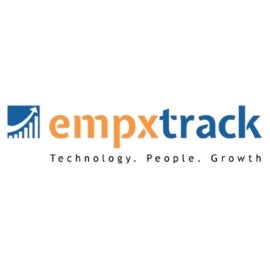
Although Empxtrack is primarily a human resources software company, it has recently branched out to provide a payroll tool. Since it has numerous configuration and customization options, it’s ideal if you want granular control over how you use the product.
Pricing
- Although the product is free for up to 25 people, a fee of $19.75 per employee per month applies to additional users. You can also subscribe to add-on features to allow them to do things beyond payroll.
Features
- Employee management database.
- Various tax-calculation options.
- Ability to capture payments made inside or outside payroll.
Pros
- User-friendly and easy to learn.
- Cloud-based platform.
- Lots of built-in capabilities.
Cons
- Can be pricey if used at larger organizations.
- Implementation takes longer than some users want.
- It sometimes takes too long to get support.
PHP Payroll: Best for automating tasks

PHP Payroll is a self-hosted, web-based product with many built-in capabilities that limit the need for manual calculations. The software is compatible with many major time-clock systems, making installation and usage more straightforward.
Pricing
- PHP Payroll is free. However, if the product doesn’t have specific features your organization requires, the company’s support team is open to creating them for a reasonable fee.
Features
- Employee self-service portal allows payout verification.
- Ability to add administrators and users as needed.
- Reduce manual work by automating steps and calculations.
Pros
- Easy to use.
- Built-in report generation.
- Caring customer service.
Cons
- Not an ideal option for larger businesses.
- Support available only through email.
- Activity logs span only 30 days.
AMGtime: Best for integrating with other services

AMGtime has a long history of providing payroll and employee attendance-tracking solutions. Today, the company still provides hardware and software-based options, along with training solutions. However, it’s primarily built for use with third-party software. That means AMGtime doesnt include as many unique selling points as other products.
Pricing
- AMGtime doesn’t offer public-facing pricing details. This is likely because the company has hardware and software-related products, along with package deals. The overall cost could vary significantly depending on needs.
Features
- Integrates with five leading payroll products, with more coming soon.
- Includes a Payroll Wizard to generate custom results.
- Can transfer data to numerous third-party payroll providers, eliminating manual entry.
Pros
- People appreciate the product’s versatility for various business needs.
- The platform saves time by streamlining processes.
- Users are generally satisfied with the software’s features and usability.
Cons
- Not ideal for companies that hire freelancers.
- Product documentation/explanations need improvement.
- Customer support experiences aren’t consistent.
Odoo: Best for controlling costs
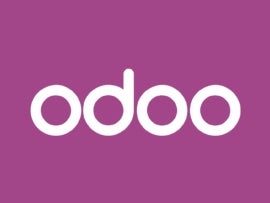
Rather than solely being a payroll product, Odoo is a plugin-based offering that allows you to install various options depending on your needs. That makes it easy to control costs while avoiding paying for or using anything that’s not needed, something especially important for small- and medium-sized businesses looking for a payroll solution.
Pricing
You can use Odoo for free if you need access to only one app/plugin. If you require something more extensive, the price is:
- Standard: €19.90 ($21.77 USD) per user per month (billed annually) or €24.90 ($27.24 USD) per user per month (billed monthly).
- Custom: €29.90 ($32.71 USD) per user per month (billed annually) or €37.40 ($40.92 USD) per user per month.
The Standard package provides access to the full Odoo app library. The Custom package provides access to the full Odoo app library, an Odoo cloud platform and on-premise option, and an external API. Although both plans allow people to see all Odoo apps, most apps require paying a one-time fee to use.
Features
- One-time fee for paid plugins.
- Each Odoo app integrates with every other for seamless compatibility.
- More than 100 payroll plugins/apps to try.
Pros
- People report quick resolution when problems arise.
- Reasonable pricing structure.
- Provides excellent flexibility for payroll and beyond.
Cons
- Not a good option if you prefer prebuilt software rather than an add-on approach.
- The app library can be overwhelming for new users.
- Support is primarily community-based or handled by individual app creators.
PayMaster: Best for customized options

PayMaster sets itself apart from some larger companies offering open-source payroll solutions by emphasizing that representatives can build customized customer options. PayMaster offers a payroll module as part of a more extensive HR offering called PayMaster HCM.
Pricing
- PayMaster doesn’t include public pricing information on its website. You must contact a representative directly to learn more about PayMaster HCM and the associated payroll module.
Features
- Set attribute-related controls, such as linking one manager to their employees.
- Export reports to various formats, including PDF and Excel.
- Ability to receive email notifications for more than 150 events as desired.
Pros
- Highly customizable, including the ability to create tabs for improved user-friendliness.
- Allows the electronic delivery of pay stubs and tax forms.
- Companies can customize employee self-service information to distribute information.
Cons
- Some information on the company website has a published date of several years ago, so you can’t verify if it’s still current.
- No weekend support available.
- Access to help documentation not available unless people are already registered clients.
TimeTrex Open Source Community Edition: Best for a well-established product

The open-source community edition of this TimeTrex product has volunteers in more than 50 countries that help you use the product and provide troubleshooting as needed. People who use this product for their payroll needs can generate U.S. and international tax reports. It also integrates with five other leading payroll software brands for simplicity.
Pricing
- TimeTrex Open Source Community Edition is a free product, and you can download it instantly in exchange for providing your name and a valid email address.
Features
- Employees can view or print electronic paycheck details at any time.
- Enjoy the option of electronically transferring funds or having TimeTrex print physical checks.
- Use the advanced payroll calculation engine to reduce errors and manual tasks.
Pros
- Excellent usability.
- Consistent performance.
- Available for Mac, PC and Linux.
Cons
- Some people wish the Community Edition had more features.
- Professional customer support not available in the Community Edition.
- No document storage offered.
ERPNext: Best for users with international teams
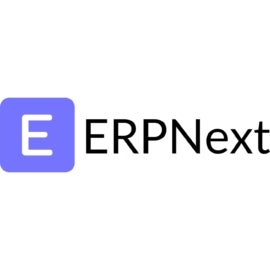
As you might expect from the name, ERPNext is an enterprise resource planning tool. Many company representatives regularly use ERP software. Such products are particularly useful for managing companies with global or multisite presences. This open-source offering is a powerful solution that makes payroll duties more straightforward.
Pricing
- The ERPNext Open Source plan is free. However, the company has numerous other tiers that are not free or open source. Take care to sign up for the right one to avoid feeling disappointed or misled.
Features
- Set the payroll processing period or add multiple tax slabs per period if your country requires it.
- Benefit from customizable salary structures that can change as your employees’ positions do.
- Generate payslips automatically after setting the desired employee parameters.
Pros
- People love the user-friendly and feature-filled interface.
- Great for growth-focused companies due to its scalability.
- Extremely customizable to meet businesses’ changing needs.
Cons
- Not all features available in every country.
- Documentation needs improvement.
- Large learning curve, especially for those not familiar with open-source products.
Razorpay: Best for companies based in India
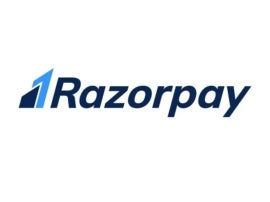
Razorpay started as an open-source company and has regularly contributed to open-source products. Although the brand is most known for its global payment solutions, it now has RazorPayX Payroll. However, it’s currently available only to customers in the Indian market.
Pricing
Razorpay’s pricing details on its website are slightly confusing. Information about its banking and payment options is easier to find than information related to its payroll product. Make sure the price and product names you see are the same as those listed below:
- Free Plan: ₹0 ($0 USD) forever
- Pro Plan: ₹85 ($1.03 USD) per user per month (billed annually) or ₹100 ($1.22 USD) per user per month (billed monthly)
Features
- An automated compliance feature simplifies record-keeping by reducing manual inputs.
- Self-service portal allows employees to access payslips or make tax declarations.
- Salary calculations and disbursements happen automatically.
Pros
- Payroll processing can happen with a single click.
- Payments automatically update as the relevant statutory laws change.
- Integrates with Slack for easy employee communications.
Cons
- Not yet available outside India.
- Difficult to learn about outside the official site because of limited geographical reach.
- Main sales team contact method is email, which may not suit people who want immediate answers.
Key features of open-source payroll software
Before diving into the market of open-source payroll software, it’s important to narrow down which features your company needs most, along with which would be nice to have or not necessary. Additionally, you need to know what’s commonly available within this product category. Here are some of them.
Automation
Payroll software commonly has automated features, but there is a wide variety in how advanced and robust they are. Some products can automatically fill in details and distribute payslips to employees, so processing happens in minutes.
Others are significantly less advanced and allow auto-filing information based on someone’s tax status or country. However, since tax specifics vary enormously, particularly per U.S. states, even modest features can be major time-savers.
Employee attendance records
Open-source payroll software often has employee-attendance record features based on when someone takes a vacation, avails of sick leave or has irregular attendance. Since these products let you set specific parameters for particular teams or individual employees, they help payroll specialists and HR professionals stay more organized.
Self-service portals
Employees who can retrieve information don’t need to ask payroll department representatives questions. Payroll software frequently offers self-service that lets workers confirm payslip details and more. Some are even more advanced and enable changing tax status or requesting leave.
Report generation
Report generation capabilities are staple features for open-source payroll software. However, you should pay attention to compatible file formats. That’s vital if you’ll frequently send the reports to different parties who may not have the same tools to open them. For example, PDF is a common output format, making the information almost universally accessible.
Ability to work with different country-related specifics
This feature is less often available when software doesn’t have a global audience, but it’s being seen more often. It’s also helpful that products are usually cloud-based and have mobile apps, so you can access the information from anywhere.
Besides universal access, products may allow people to show different currencies on payslips or automatically input the correct tax details based on someone’s location. You may not need that feature immediately if your company operates in only one country. However, it’s certainly handy if growth is on the horizon.
Methodology
We covered these products by compiling information from publicly accessible user reviews, the vendors’ sites and reputable third-party organizations.
How do I choose the best open-source payroll software for my business?
Open-source payroll software can be a game-changer for your company. You’re likely to have the best outcomes by becoming aware of the options and how closely they align with your organization’s needs.
Since these products are often free — or complimentary on some tiers — the cost will likely be less of a concern than it may be for other types of software. However, since open-source software is primarily a community-supported offering, think about how comfortable you are with potentially not having immediate assistance when needed. Conversely, some of the offerings covered here provide phone and email support, so prioritize those if ongoing service is a main selling point.
Consider whether the currently available feature suits your expectations. Many open-source software companies release new features frequently, but not always on a predictable timeline.
Finally, get feedback from the people who will use the software most often. Determine their biggest challenges and how software could help them the most. That input will go a long way in helping you make the most appropriate choice.








